Apr 25, 18 · Solve the following differential equation (1x^2)dy/dxy=tan^1x askedApr 23, 18in Mathematicsby Nisa(597kpoints) differential equations class12 0votes 1answer Let a solution y = y(x) of the differential equation x√(x^2 – 1)dy – y√(y^2 – 1)dx = 0 satisfies y(2) = 2/√3 Assertion (A) y = (x) = sec(sec^1xDec 24, 18 · Transcript Example 10 Find the general solution of the differential equation 𝑑𝑦/𝑑𝑥=(1 𝑦^2)/(1 𝑥^2 ) 𝑑𝑦/𝑑𝑥=(1 𝑦^2)/(1 𝑥^2 ) 𝑑𝑦/(1 𝑦2)=𝑑𝑥/(1 𝑥^2 ) Integrating both sides ∫1 𝑑𝑦/(1 𝑦^2 ) = ∫1 𝑑𝑦/(1 𝑥^2 ) (∫1 1/(1 𝑥^2 ) dx = tan−1 x c) tan−1 y = tan−1 x c tan−1 y = tan−1 x c is theSolve the differential equation x (1 y^2)dx y (1 x^2)dy = 0
How To Solve X Y 2 Dy Dx A 2 Quora
Solve the differential equation y(1-x^(2))(dy)/(dx)=x(1+y^(2))
Solve the differential equation y(1-x^(2))(dy)/(dx)=x(1+y^(2))-Simple and best practice solution for 2xy(4y^2)dx(y1)(x^22)dy=0 equation Check how easy it is, and learn it for the future Our solution is simple, and easy to understand, so don`t hesitate to use it as a solution of your homeworkFeb 10, 21 · If √(1 x^2) √(1 y^2) = a(x y), then dy/dx =



Solved Solve Each Of The Following 4 Initial Value Problems Ivp Via 1 Answer Transtutors
X`sqrt(1y^2)dxysqrt(1x^2)dy=0` solve using variable separable 1 Educator answer Math Latest answer posted January 27, 12 at AM(c) ( y 2 x y 1 ) dx ( x 2 x y 1 ) dy = 0With M = y 2 x y 1 and N = x 2 x y 1, note that ( N x M y) / ( x M y N ) = ( x y ) / ( x ( y 2 x y 1 ) y ( x 2 x y 1 ) ) = ( x y ) / ( x y) = 1 Thus, μ = exp ( ∫ d(xy) ) = e xy is an integrating factor The transformed equation is ( y 2 x y 1 ) e xy dx ( x 2 x y 1 ) e xy dy = 0Find dy/dx y^2=(x1)/(x1) Differentiate both sides of the equation Differentiate the left side of the equation Tap for more steps Differentiate using the chain rule, which states that is where and Tap for more steps To apply the Chain Rule, set as
Free Multivariable Calculus calculator calculate multivariable limits, integrals, gradients and much more stepbystepLearn how to solve differential equations problems step by step online Solve the differential equation xy*dx(1x^2)dy=0 Grouping the terms of the differential equation Group the terms of the differential equation Move the terms of the y variable to the left side, and the terms of the x variable to the right side Simplify the expression \frac{1}{y}dy Integrate both sides of theFind dy/dx when x and y are connected by the relation if ax2 2hxy by2 2gx 2fy c = 0, then show that dy/dxdx/dy = 1 asked Mar 27, 18 in Class XII Maths by nikita74 ( 1,017 points) continuity and differentiability
Answer to Write dy in terms of x and dx y = 1 / {(x^2 1)^{4 / 3}} By signing up, you'll get thousands of stepbystep solutions to yourIf X 1 Plus 2 Plus 4 By 2 8 By 3 Factorial 16 By 4 Fact Then X 1 Is Equal To If X 1 X 2 X 3 XFeb 10, 21 · If x = y√(1 y^2), then dy/dx = Login Study Materials NCERT Solutions NCERT Solutions For Class 12 NCERT Solutions For Class 12 Physics;



Math 432 Hw 2 5 Solutions Pdf Free Download



Solutions Manual For Differential Equations An Introduction To Modern Methods And Applications 3rd E By Gucci6547 Issuu
Solve the differential equation (1 x2) dy/dxy=e^(tan^(−1))xFeb 26, 09 · dy/dx does reduce the exponent, but only of x, like if y= x^3, dy/dx = 3x^2, but if y = 2^3, 2 isn't x, so you don't reduce any exponents or anything If you have some constant, as said, like y=2^3, then dy/dx = 0, and if you have something like then dy/dx =Jan 22, · Solve the differential equation x(y1) dx(x1)dy=0 If y=2 when x=1 Latest Problem Solving in Differential Equations More Questions in Differential Equations Online Questions and Answers in Differential Equations
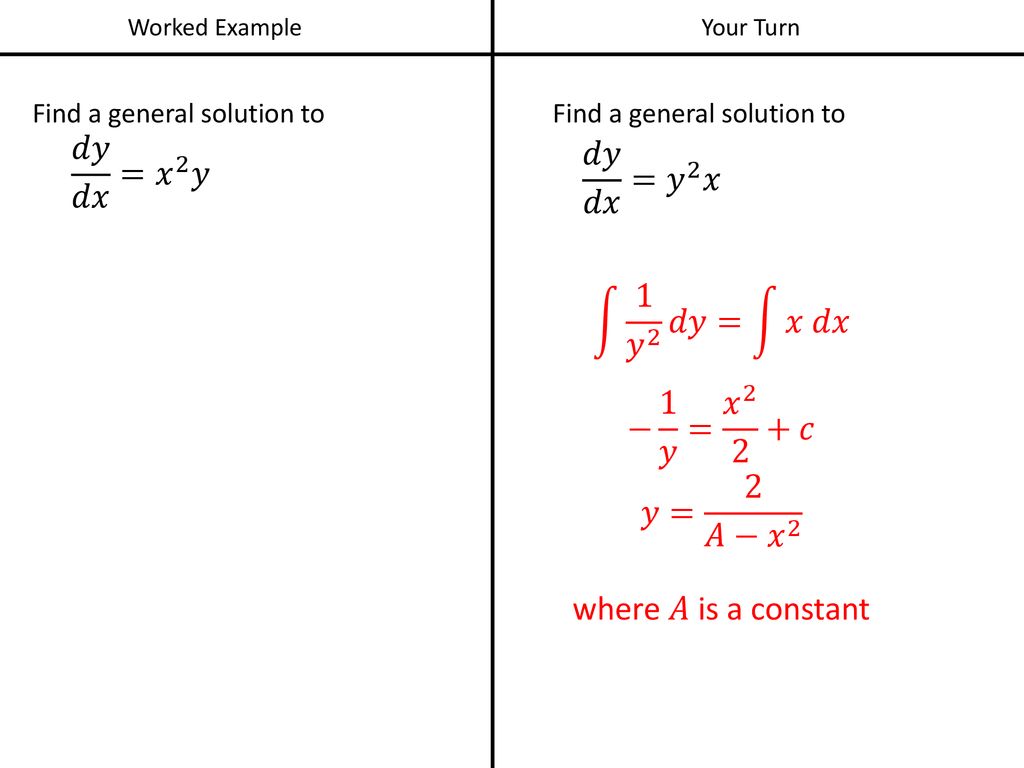


Differential Equations Separation Of Variables Ppt Download



If Y 1 X 1 X 2 2 X 3 3 Then Dy Dx A Y 1 B
A little Help here!$$2 xy \ dx x^2 \ dy 1 \ dy = 0 $$ Change the sides $$2 xy \ dx x^2 \ dy = 1 \ See full answer below Become a member and unlock all Study Answers Try it riskfree for 30 daysFirst, we get y (1 x 2 y 4 1 ) d x = − 2 x d y y ′ ≡ d y / d x = 2 x − y (1 x 2 y 4 1 ) From inspection, I would recommend substituting v = x y 2, since this help take the First order ODE (y^2\sqrt{xx^2y^2}y)dx 2xdy=0



Homogeneous Differential Equations



Differential Equations Solved Examples 17
Transcribed image text dx If y3 = xy3 x2 – 1 and it is known that dy y2x 3cy2 3y2 find all coordinate points on the curve where y = 2 and the line tangent to the curve is vertical, or state that no such points exist Submit Answer No such points exist One such point exists Two such points exist Answer attempt 1 out of 2Let's simplify it First dy/dx = (y/x 1)/(y/x 1) Taking y = vx dy/dx = v xdv/dx Therefore, dx/x = (v 1)dv / (v^2 1) Integrating we get log (1/x) logc = arctan (y/x) 1/2 logSolve X Y ( 1 X Y 2 ) D Y D X = 1 University of Mumbai BE Mechanical Engineering Semester 2 (FE First Year) Question Papers 146 Important (dx)/(dy)=xyx^2y^3` `therefore 1/x^2(dx)/(dy)1/xy=y^3` Now, put`1/x=v` `therefore (dv)/(dy)vy=y^3` `` This is linear differential eqn ∴ Integrating Factor `=e^(intydy)=y^2/e^2`
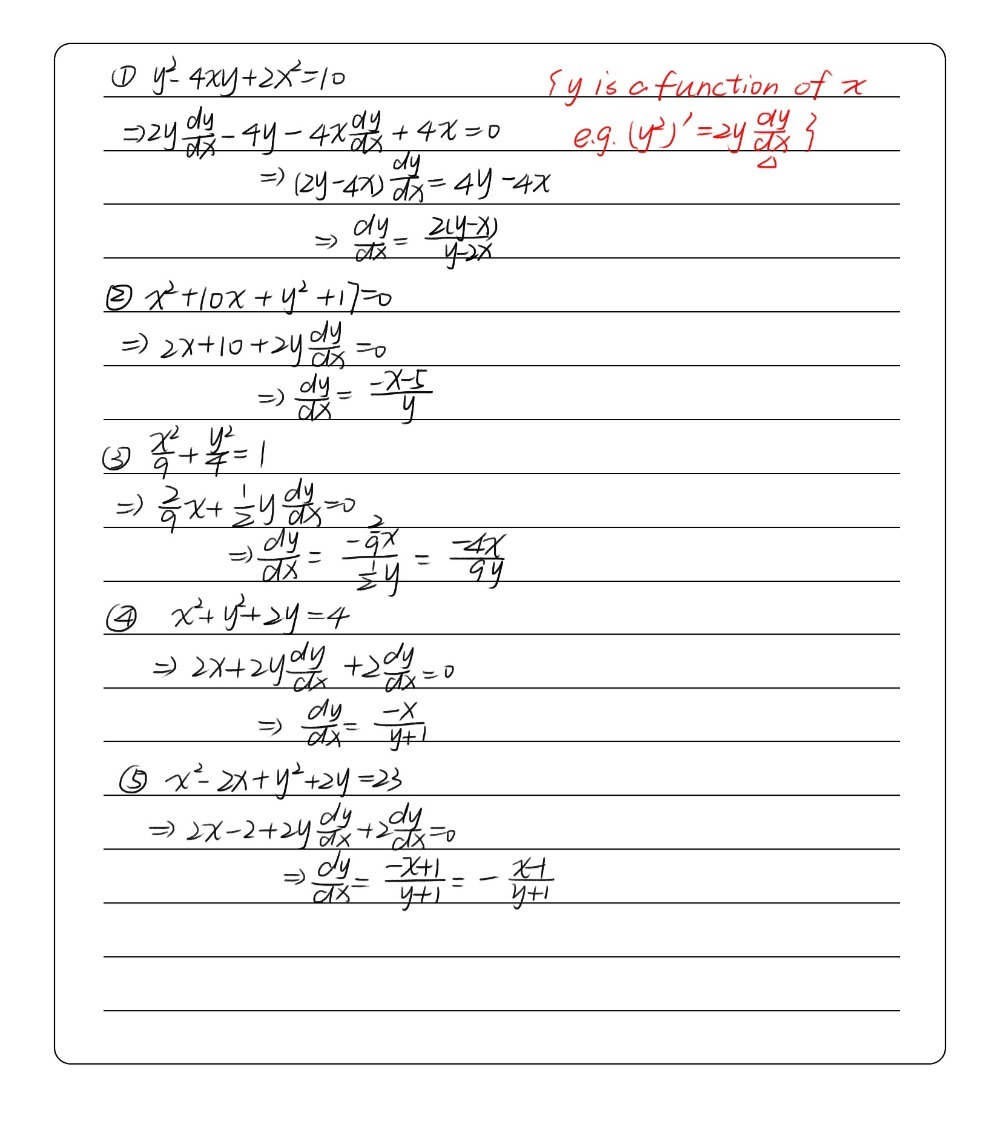


Y2 4xy 2x2 10 X2 10x Y2 17 0 Frac X29 Frac Y24 1 X Gauthmath


How To Graph X 2 Dy Dx Y Xy Y 1 1 Quora
Aug 15, 19 · Related Threads on Differential equation problem Solve dy/dx = (y^2 1)/(x^2 1), y(2) = 2 1x^2 dy/dx = 1y^2, differential equation!JEE Main If (dy/dx)=(xy/x2y2);Solve the differential equation √ (1 x^2 y^2 x^2y^2) xy (dy/dx) = 0 Sarthaks eConnect Largest Online Education Community



Bernoulli Differential Equation X Dy Dx Y 1 Y 2 Differential Equations Math Videos How To Become



Answers To The Review Problems For The First Exam 251 05 10 In Spring 06
May 23, · Solution for Solve dy/dx=2xy/(x^2y^2) Q A group of 150 tourists planned to visit East Africa Among them, 3 fall ill and did not come, of thMar 28, 19 · Get the detailed answer (1x)^2 dy/dx = (1y)^2 Get the detailed answer (1x)^2 dy/dx = (1y)^2 Homework Help What's your question?Aug 21, 16 · #dy/dx=x^2(1y)# This is separable #1/(1y) dy/dx=x^2# #int \ 1/(1y) dy/dx \ dx = int \ x^2 \ dx# #int \ 1/(1y) \ dy = int \ x^2 \ dx# #ln (1y) = x^3/3 C# #1y = e^ (x^3/3 C) = e^ (x^3/3)e^C = Ce^ (x^3/3) # #y = Ce^ (x^3/3) 1# Applying the IV #3 = C e^0 1 = C 1 implies C = 4# #y = 4e^ (x^3/3) 1#



Engineering Mathematics Notes



Engineering Mathematics Notes
Pricing Log in Sign up Calculus 1 answer 0 watching 8 views 11 Nov 19 (1x)^2 dy/dx = (1y)^2 Answer Watch 1 answer 0 watching 8 views For unlimited access to Homework Help, aAnswer to Solve the initial value problem dy/dx = (y^2 1)/(x^2 1), y(2) = 2 By signing up, you'll get thousands of stepbystep solutions toClick here👆to get an answer to your question ️ The general solution of the differential equation (1 y^2)dx (1 x^2)dy = 0 is


Solve The Differential Equation Dy Dx 1 X Y2 Xy2 When Y 0 X 0 Studyrankersonline



Ex 9 4 16 For Xy Dy Dx X 2 Y 2 Find Solution
D/dx x^2 y^4, d/dy x^2 y^4 Extended Keyboard;About Press Copyright Contact us Creators Advertise Developers Terms Privacy Policy & Safety How works Test new features Press Copyright Contact us CreatorsDivide both sides by x(1 — y) to put all factors with x on the left and all factors with y on the right (1 — x^2)/x dx = y(1 y)/ (1 — y) dy Now integrate both sides You'll need to use polynomial division to rewrite both sides as a polynomial plus a proper rational expression first



The Solution Of Dy Dx X 2 Y 2 2x 2 Is



How To Solve Math 1 X 2 Dy 1 Y 2 Dx Math Quora
Compute answers using Wolfram's breakthrough technology & knowledgebase, relied on by millions of students & professionals For math, science, nutrition, history, geography, engineering, mathematics, linguistics, sports, finance, musicSimple and best practice solution for (x^2)dxy(x1)dy=0 equation Check how easy it is, and learn it for the future Our solution is simple, and easy to understand, so don`t hesitate to use it as a solution of your homework If it's not what You are looking for type in the equation solver your own equation and let us solve itFind dy/dx y^2=1/(1x^2) Differentiate both sides of the equation Differentiate the left side of the equation Tap for more steps Differentiate using the chain rule, which states that is where and Tap for more steps To apply the Chain Rule, set as



Ex 9 5 12 Find Particular Solution X2 Dy Xy Y2 Dx 0



Y2 4xy 2x2 10 X2 10x Y2 17 0 Frac X29 Frac Y24 1 X Gauthmath
Then a value of x satisfying y(x) = e is (A) √3 e (B) (1/2)√3 e √2 e (D) (e/√2) Check AnswIn this tutorial we shall evaluate the simple differential equation of the form $$\frac{{dy}}{{dx}} = x{y^2}$$ by using the method of separating the variables The differential equation of the form isSep 03, 14 · I came across a question solve $$\frac{dy}{dx} = \frac{1}{xy^2},\qquad y(2) = 0$$ I have no clue how to proceed I have suspicion that this equation has no closed form solution and may be there was a mistake in the question Course is a basic course on ODEs I will appreciate solution/hints/further reading



Solve The Linear Differential Equation X 2 1 Dy Dx Xy X Youtube



Solve X X 1 Dy Dx X 2 Y X3 2x 1 Maths Application Of Derivatives Meritnation Com
Answer to Solve the given differential equation by separation of variablesy ln x * (dx/dy) = (y1)/x^2(y^2)/2 2y lny =Feb 04, 16 · But if I expand the bracket $(xy)^2$ before integrating I will get $$\varnothing_1=\int Mdx=\int (xy)^2dx=\int (x^22xyy^2)dx=\frac{x^3}{3}xy^2x^2y$$ Wich will lead to the solution $$\varnothing=\varnothing_1\varnothing_2=\frac{x^3}{3}xy^2x^2yy=Constant$$View y2docx from MATH at University Francisco de Paula Santander ( y 2 yx ) ⅆx − x2 ⅆx =0 y 2 yx−x 2 2 y v = → y=vx x (1) dy ⅆv =v x ⅆx dx (2) vx 2 dy ⅆy ´y



Solve The Differential Equation 1 X 2 1 Y Dx Xy 1 Y Dy Brainly In



Solution Of Y Xy 1 Dx X 1 Xy X 2y 2 Dy 0 Mathematics Stack Exchange
May 29, 18 · Ex 94, 6 For each of the differential equations in Exercises 1 to 10, find the general solution 𝑑𝑦/𝑑𝑥=(1𝑥^2 )(1𝑦^2 ) 𝑑𝑦/𝑑𝑥=(1𝑥^2 )(1𝑦^2 ) dy = (1𝑥^2 )(1𝑦^2 ) dx 𝑑𝑦/(1 𝑦^2 )= (1 𝑥^2) dx Integrating both sides ∫1 𝑑𝑦/(1 𝑦^2 ) = ∫1 (1𝑥2)𝑑𝑥 tan−1 y = x 𝒙^𝟑/𝟑 CConsider the equation dy/dx = 1 x^2 y^2 2xy y_1(x) = x is a particular solution of this equation y = y_1 1/v = x 1/v, Solve the resulting equation for the auxiliary function v and use the result to find a general solution of the given differential equationWeekly Subscription $199 USD per week until cancelled Monthly Subscription $699 USD per month until cancelled Annual Subscription $2999 USD per year until cancelled



برنوللي والمتجانسة وريكاتي



Homogeneous Differential Equations
Mar 11, 16 · Use the chain rule here Let `z = x 1/x` and y = log z `dz/dx = 1 1/x^2` and `dy/dz = 1/z` Multiplying the two derivatives `(dz/dx)*(dy/dz) = (1 1/x^2)*(1/z)` => `dy/dx = (1 1/x^2)*(1In calculus, Leibniz's notation, named in honor of the 17thcentury German philosopher and mathematician Gottfried Wilhelm Leibniz, uses the symbols dx and dy to represent infinitely small (or infinitesimal) increments of x and y, respectively, just as Δx and Δy represent finite increments of x and y, respectively Consider y as a function of a variable x, or y = f(x)VITEEE 14 The solution of (dy/dx) = (x2 y2 1/2xy), satisfying y(1) = 0 is given by (A) hyperbola (B) circle ellipse (D) parabola Check An



Math 432 Hw 2 5 Solutions Pdf Free Download



Line Drawing Version B Semiformal Methods Derivation Anthony



Engineering Mathematics Notes



Solve X X 1 Dy Dx Y X2 X 1 2 Maths Differential Equations Meritnation Com



The Solution Of Xsqrt 1 Y 2 Dx Ysqrt 1 X 2 Dy 0 Youtube
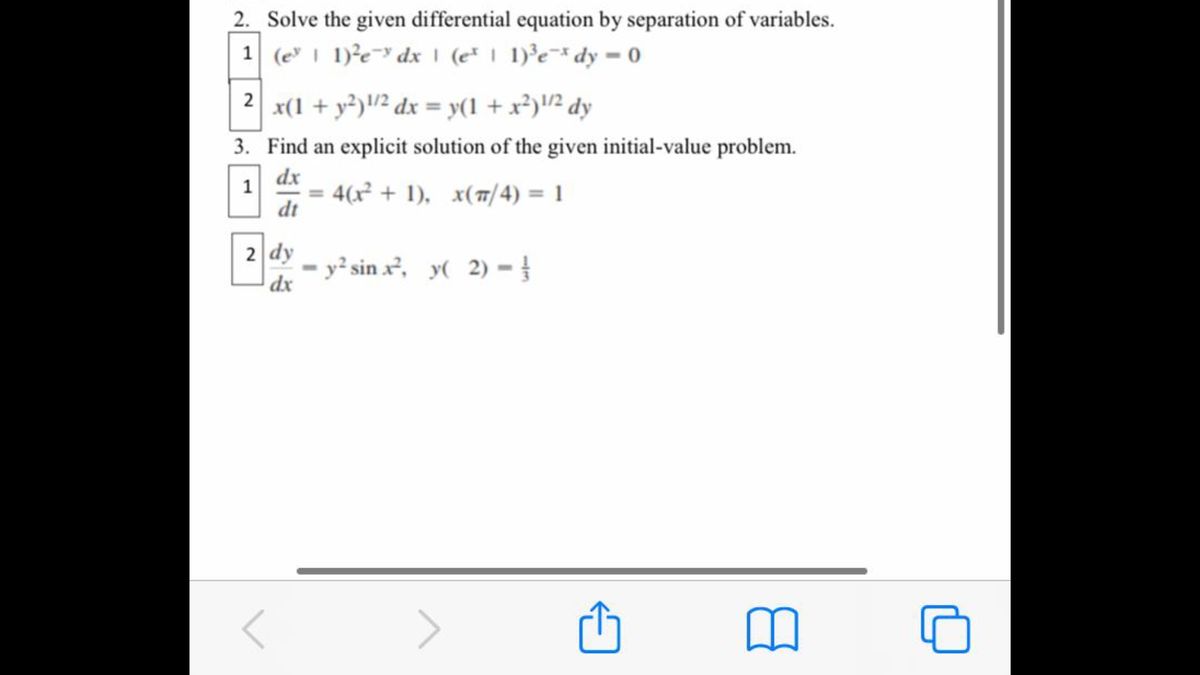


Answered 2 Solve The Given Differential Bartleby
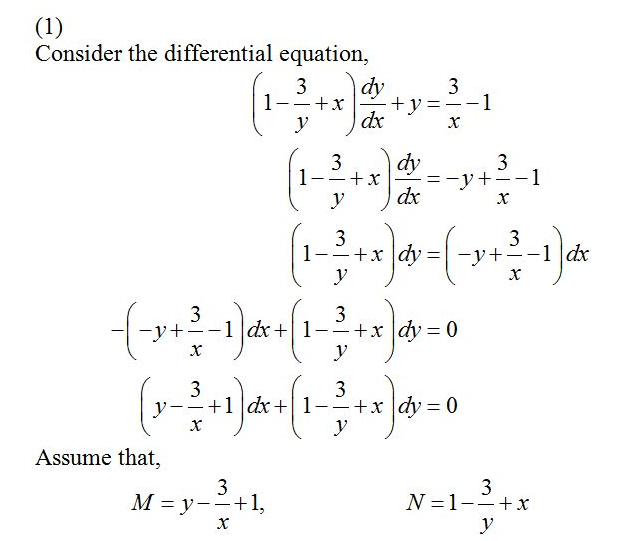


Solve The Following Differential Equation 1 1 3 Y X Dy Dx Y 3 X 1 2 Ln X Y X Dx Ln X Dy 3 X 2 Y 2 Y 4sin X Dx 2xy 4y 3cos X Dy 4 Tan X 8sin X Sin Y Dx 8cos X Cos Y Dy 0 5 1 Y 2sin 2x Dx Ycos 2x Dy 0 Wegglab



Solved Solve Each Of The Following 4 Initial Value Problems Ivp Via 1 Answer Transtutors
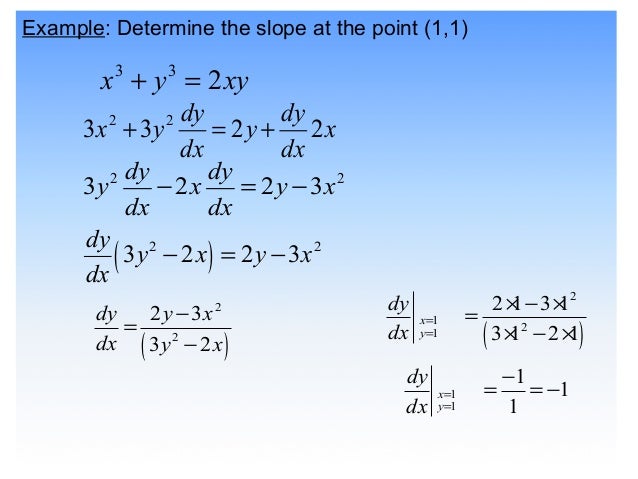


4 1 Implicit Differentiation



Misc 7 Show That General Solution Is X Y 1 A 1 X Y 2xy



Solved Separation Of Variables Solve The Following Differ Chegg Com



Initial Value Problem Dy Dx Y 1 X 3 With Y 1 0 Separable Differential Equation Youtube



Differential Equations Separation Of Variables Ppt Download
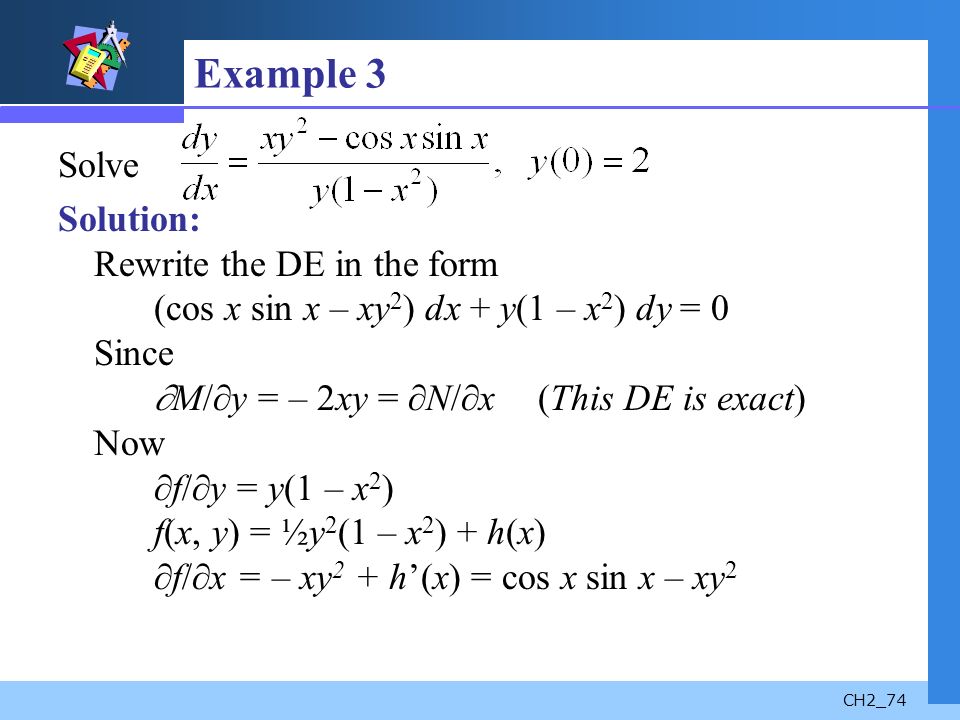


First Order Differential Equations Chapter 2 Ch2 2 Contents 2 1 Solution Curves Without A Solution 2 1 Solution Curves Without A Solution 2 2 Separable Ppt Download



The Solution Of The Differential Equation Dy Dx X Y 2 When



Pdf Math 255 Exercises Suleyman Tarsuslu Academia Edu
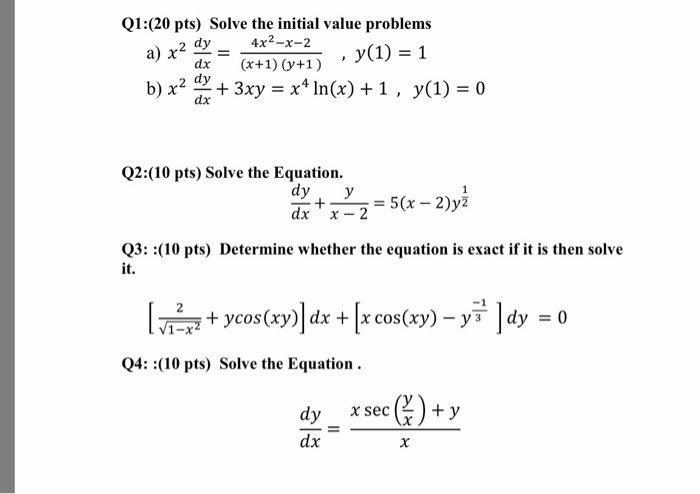


Solved Solve The Initial Value Problems X 2 Dy Dx 4x 2 Chegg Com
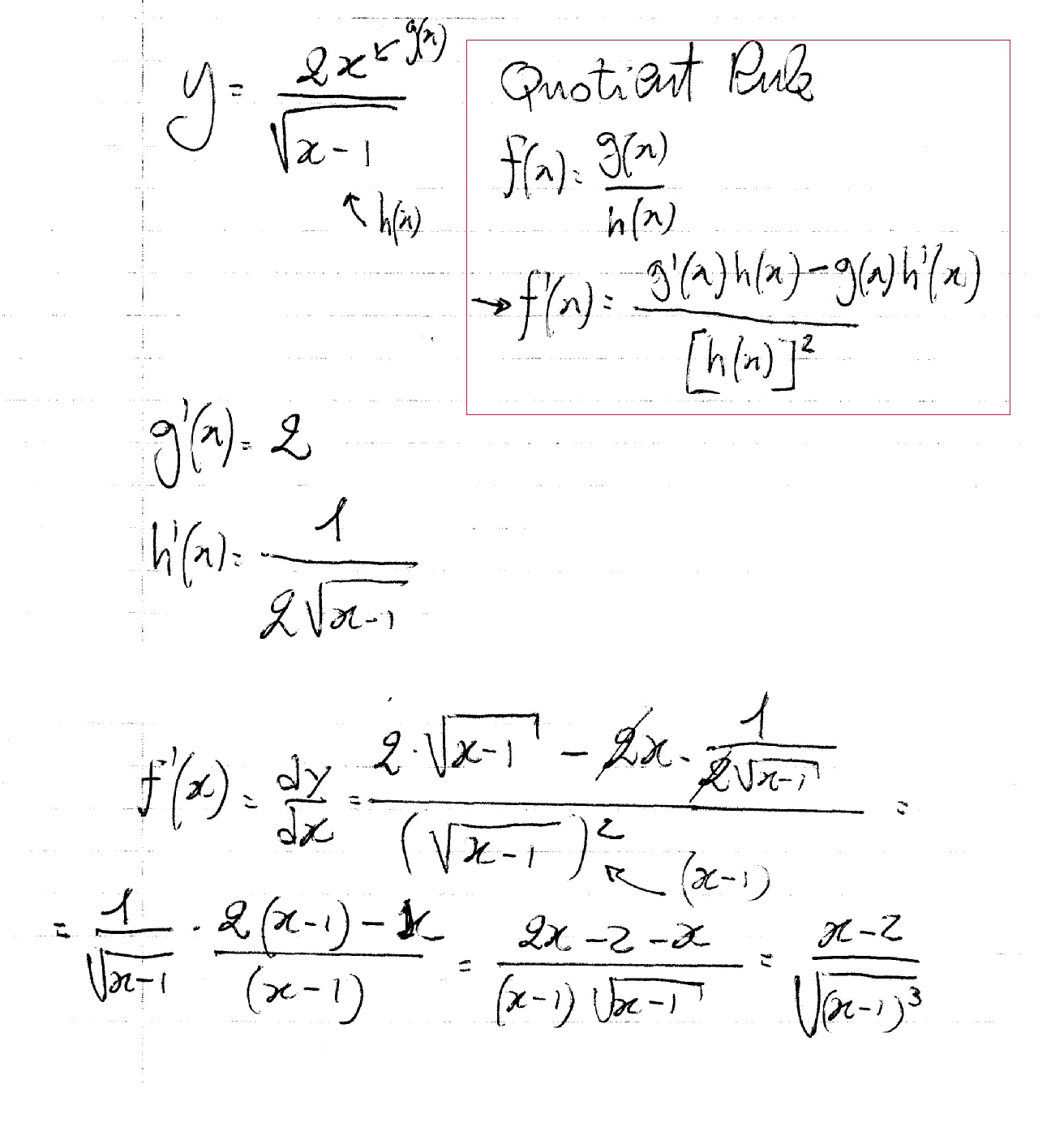


How Do You Find Dy Dx For Y 2x Sqrt X 1 Socratic



Engineering Mathematics Notes



Worked Example Implicit Differentiation Video Khan Academy



1 X 2 1 Y Dx X Y 1 Y Dy Y 4 1 X 1 Y Dx Xy 1 Y Dy Youtube



Example 9 Find General Solution Of Dy Dx X 1 2 Y Examples



Worked Example Identifying Separable Equations Video Khan Academy


Solve The Differential Equation X2 1 Dy Dx 2xy 1 X2 1 Studyrankersonline



Solve 1 X 2 D 2y Dx 2 X Dy Dx Y X 1 X 2 3 2 Mathematics 2 Question Answer Collection



X 1 X 2 Dy 2x 2y Y Ax 3 Dx 0



X Y 1 Dx Y X 1 Dy 0find The General Solution Of The Differential Equation Brainly In
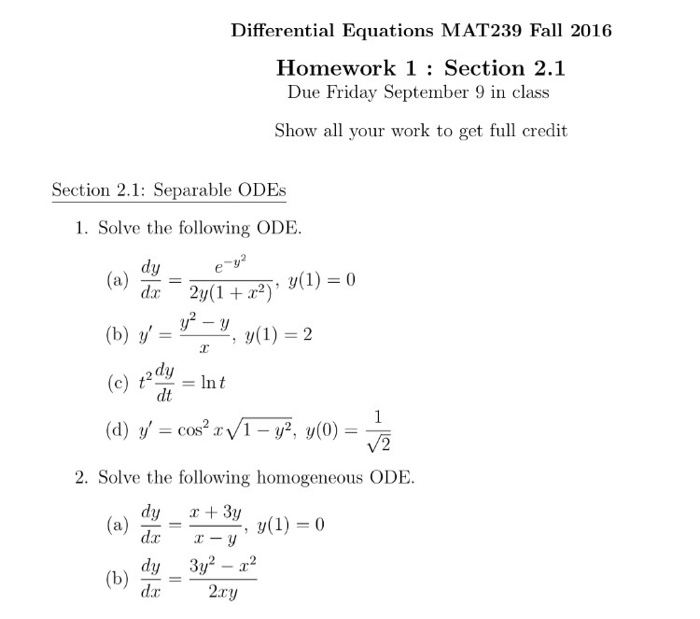


Solved Solve The Following Ode Dy Dx E Y 2 2y 1 X 2 Chegg Com



Solve 1 X 2 D 2y Dx 2 X Dy Dx Y X 1 X 2 3 2 Mathematics 2 Question Answer Collection



Solution Solve The Differential Equation X Y 1 Dx X 1 Dy 0 If Y 2 When X 1



X 1 Y 2 Dx Y 1 X 2 Dy 0 Youtube



Solve The Following Differential Equation Y 1 X 2 Dy Dx X 1


Solved Find The Particular Solution Indicated For The Following Course Hero


Solve The Following Differential Equation 1 X 2 Dy Dx Y Tan 1x Sarthaks Econnect Largest Online Education Community



Solution Solve The Differential Equation X Y 1 Dx X 1 Dy 0 If



2x Y 1 Dx 2y X 1 Dy 0 Youtube


How To Solve X Y 2 Dy Dx A 2 Quora


Find The General Solution Of Differential Equation X 2 Y 1 Dx Y 2 X 1 Dy 0 Sarthaks Econnect Largest Online Education Community



Engineering Mathematics Notes
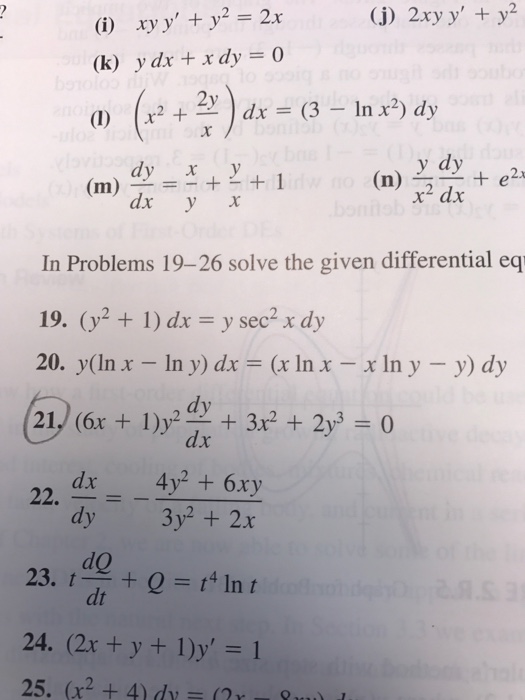


Solved Xy Y Y 2 2x 2xy Y Y 2 Y Dx X Dy 0 X 2 Chegg Com


Can You Solve This Differential Equation 1 3x 2 Y Dx X 3y 2 Dy Quora
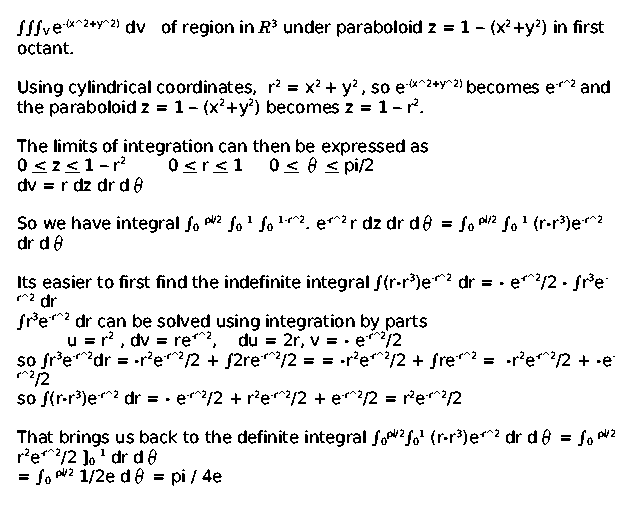


Answers To The Review Problems For The First Exam 251 05 10 In Spring 06



Example 10 Find General Solution Dy Dx 1 Y2 1 X2 Examples
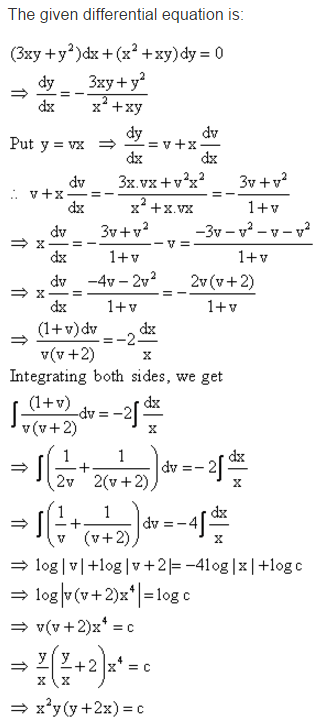


Find The Particular Solution Of Given Differential Equation 3xy Y 2 Dx X 2 Xy Dy 0 At X 1 Y 1 Mathematics Topperlearning Com D1ksg633


How To Solve The Differential Equation Math X Sqrt 1 Y 2 Dx Y Sqrt 1 X 2 Dy 0 Math Quora



Plz Solve The Differential Eq 1 X2 Dy Dx Xy X2 Where Y 2 And X 0 Maths Differential Equations Meritnation Com
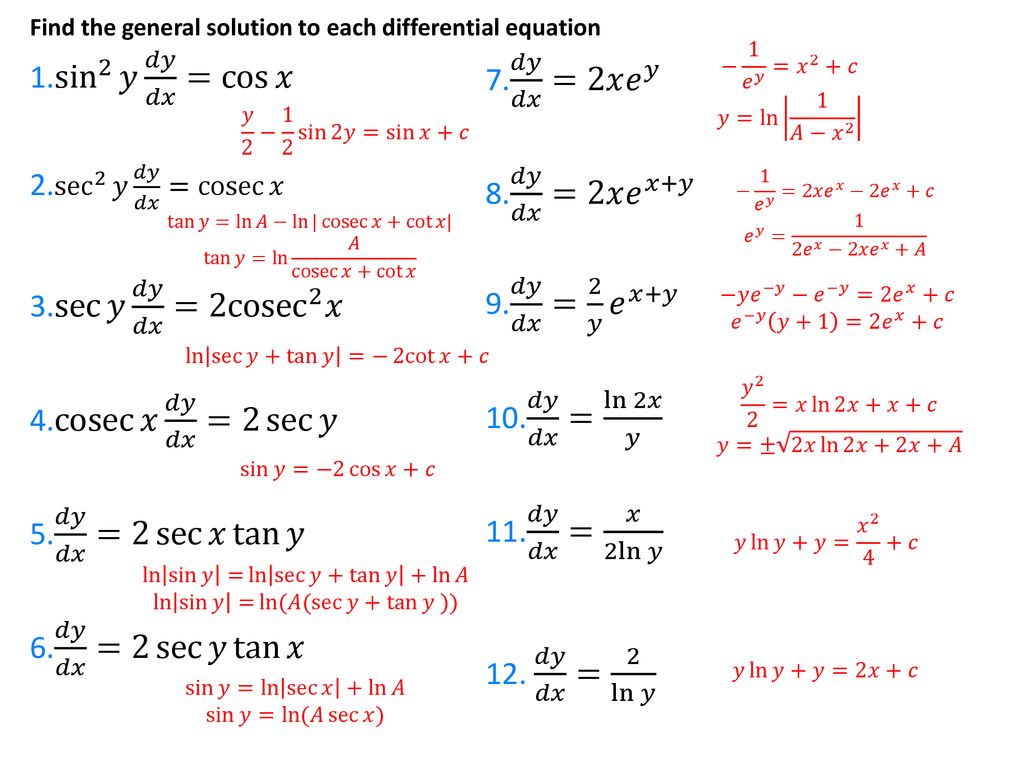


Differential Equations Separation Of Variables Ppt Download



Ex 9 4 6 Find General Solution Dy Dx 1 X2 1 Y2



X 1 Y2 Dx Y 1 X2 Dy 0 Brainly In



Engineering Mathematics Notes



Solve In Series The Equation 1 X 2 D 2y Dx 2 X Dy Dx Y 0 About The Point X 0 Mathematics 2 Question Answer Collection



2xy Y 2 2x 2 Dy Dx 0 Y 2 When X
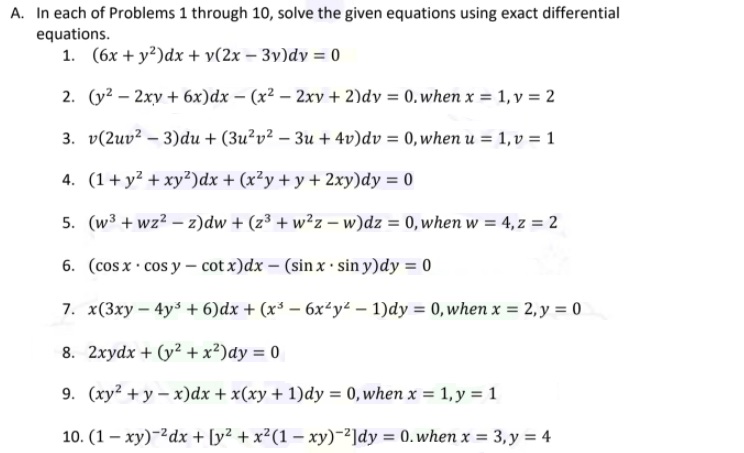


Answered A In Each Of Problems 1 Through 10 Bartleby


How To Get The Special Solution Of This Differential Equation Y Xdy Dx 2 1 X 2 Dy Dx Where X 1 Y 1 Quora
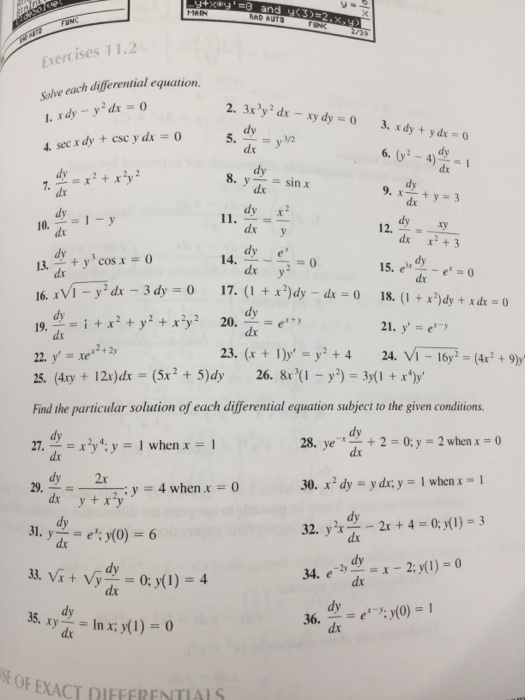


Solved Solve Each Differential Equation 1 X Dy Y 2 Dx Chegg Com
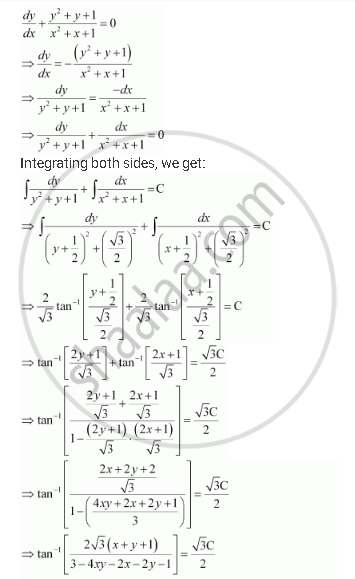


Show That The General Solution Of The Differential Equation Dy Dx Y 2 Y 1 X 2 X 1 0 Is Given By X Y 1 A 1 X Y 2xy Where A Is Parameter Mathematics Shaalaa Com
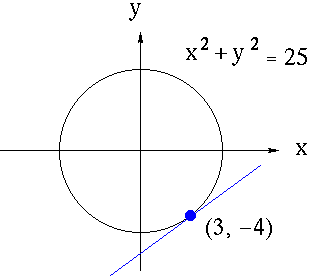


Implicit Differentiation



Homogeneous Differential Equations



Find The Particular Solution Of The Differential Equation X Y Dy Dx X 2y Given That Y 0 When X 1 Mathematics Shaalaa Com



Differential Equations Solved Examples Solve The Ivp 2xy X 4 Dx X 2 Y 2 Dy 0 Y 0 1



Solution Of The Equation Dy Dx 1 X Tany 1 X 2 Tanysiny Is


Find The General Solution Of Differential Equation X 1 Y 2 Dx Y 1 X 2 Dy 0 Sarthaks Econnect Largest Online Education Community



1 X 2 Dy Dx 2xy X 2 2 X 2 1 Youtube



Solve Y 1 Xy Dx X 1 Xy X 2y 2 Dy 0 Mathematics Stack Exchange



Unit 03 Differential Equations Equations Trigonometric Functions
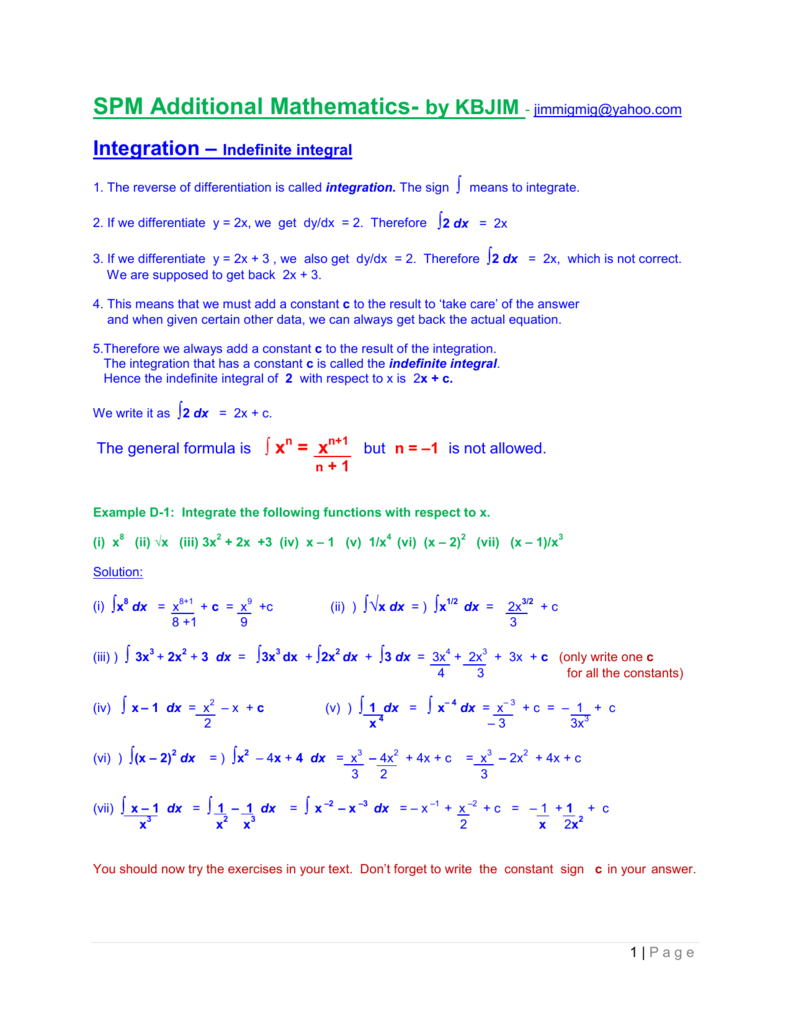


Integration Webfunpage Com


Find The General Solution Of Differential Equation Y 1 X 2 Dy Dx X 1 Y 2 Sarthaks Econnect Largest Online Education Community



8 Differential Equations
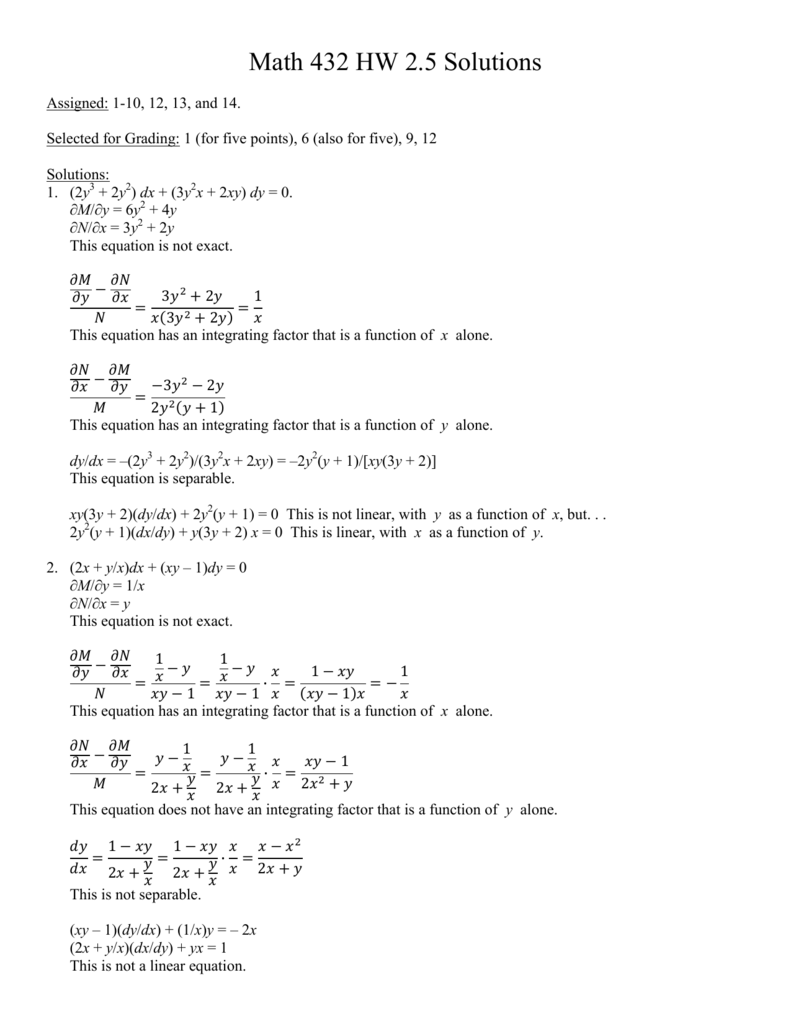


Math 432 Hw 2 5 Solutions


What Is The Solution Of The Differential Equation 1 X 2 Dy 1 Y 2 Dx 0 Quora



If Y Xx Prove That D2y Dx2 1 Y Dy Dx 2 Y X 0 Explain In Great Detail Mathematics Topperlearning Com X4m0m1ww



Solve The Following Differential Equation X 2 Dy Dx Xy 1 Cos Y X X 0 Youtube



What Is The Solution For Math Sqrt 1 X 2 Sqrt 1 Y 2 Dx Xy Dy 0 Math Quora
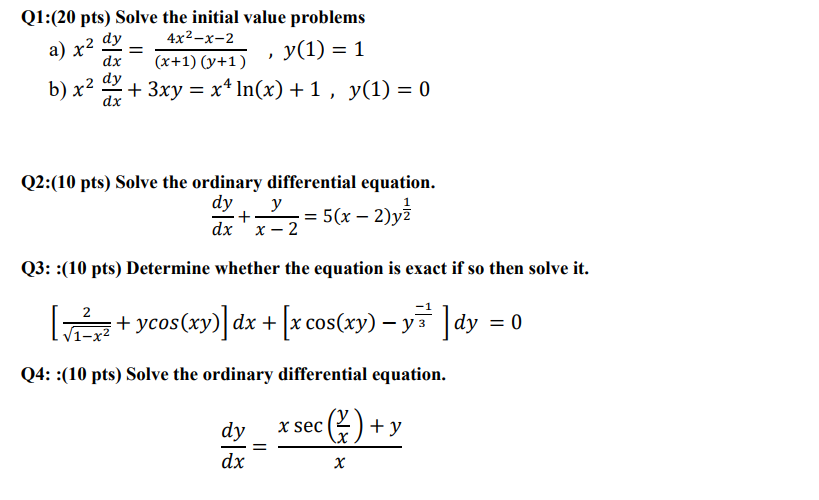


Solved Solve The Initial Value Problems A X 2 Dy Dx 4x Chegg Com



0 件のコメント:
コメントを投稿